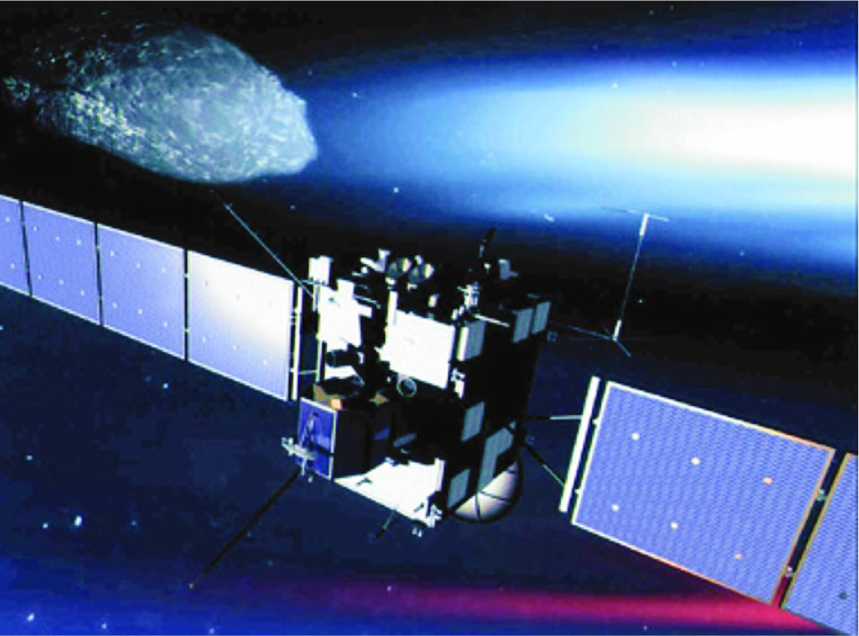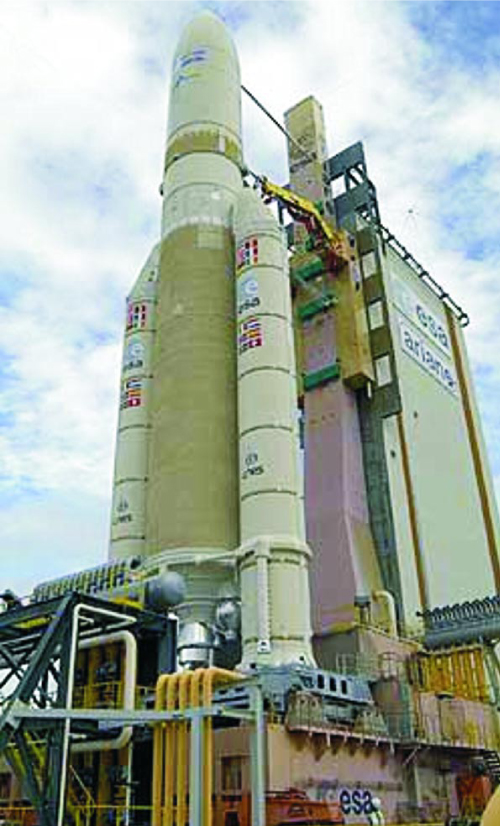Europe’s Comet Mission Delayed
DOI: 10.1063/1.1570765
Minutes after it took off on 11 December from Kourou, French Guiana, the Ariane 5 rocket plunged into the Atlantic Ocean with two telecommunications satellites on board. The mishap means the European Space Agency’s ambitious comet probe, Rosetta, will be delayed—and must find a new target.
Rosetta was supposed to set off on 22 January for a 2011 rendezvous with Comet Wirtanen. It would have used a smaller version of the Ariane 5 rocket than the one that failed. But Arianespace, the launch company, suspended all sendoffs for several weeks to conduct an internal review. As a result, Rosetta missed its launch window for Wirtanen.
In any case, ESA wants to wait until it has confidence in a successful launch before slinging the €1 billion (roughly $1.1 billion) Rosetta into space. Out of 14 launches, the Ariane 5 has had four failures—including its maiden flight on 4 June 1996, which lost ESA Cluster, a mission to study Earth–Sun interactions. (A replacement mission was sent into space in 2000.) “The reason for not flying now,” says ESA’s director of space science, David Southwood, “is a distrust in the Ariane 5 system, not [in] any one single item. This made the decision hard and extremely controversial. … We have done this to ensure that [a launch failure] does not happen again and that Europe gets a truly reliable and extremely modern launcher in Ariane 5.”
Like Wirtanen, the replacement comet should be one that Rosetta can chase in from the cold. “What we particularly want,” says the mission’s plasma consortium spokesman, Chris Carr of Imperial College, London, “is a long view—from close to its farthest point, where it’s almost dormant, to full activity.” Adds project scientist Gerhard Schwehm, “We will look for a comet that comes into the inner Solar System. There are a few phenomena that really come into play when the comet is heated up—the coma and tail start evolving.” And, for Rosetta’s lander to touch down softly, the comet can’t exceed about 5 km in diameter.
Other selection criteria are minimizing technical risks from changes in the spacecraft’s trajectory and keeping costs down. Storage and other added costs are expected to come to €50–100 million, straining ESA’s already tight budget (see Physics Today, August 2002, page 24
Candidate replacement destinations for Rosetta include the comets Churyumov–Gerasimenko, Haneda Campos, Howell, Hardy-2, and Tempel-2. A decision is expected in May, and the new launch date will be sometime in the next one to two and a half years, Schwehm says.
The Rosetta delay is the second setback in recent months for the comet community: Last August, NASA lost the Comet Nucleus Tour (Contour), which was supposed to fly by three comets (see Physics Today, October 2002, page 26
In other European space news, Alain Bensoussan, president of CNES, France’s space agency, announced on 29 January that he will step down after seven years on the job. Of ESA’s 15 member states, says Southwood, France has the largest space industry. “The head of CNES is always important to ESA, and any change is likely to herald other changes. I think that all Europeans interested in developing European space capabilities have to be concerned.”
CNES’s budget has been shrinking since 1997, and a recent report chaired by Roger-Maurice Bonnet, until recently a top CNES official, gave Bensoussan a vote of no-confidence. Just a few months earlier, Gérard Brachet, CNES’s director general, left. “There’s a general crisis at CNES,” says an agency spokesman, adding that the Ariane 5 failure, while part of the crisis, did not trigger Bensoussan’s resignation.

Rosetta (above) seeks a new date after the failure of the ill-fated Ariane 5 (right).
(Artist’s rendering of Rosetta courtesy of ESA.)/ESA/CNES/ARIANESPACE/CSG


ESA/CNES/ARIANESPACE/CSG

More about the Authors
Toni Feder. American Center for Physics, One Physics Ellipse, College Park, Maryland 20740-3842, US . tfeder@aip.org
